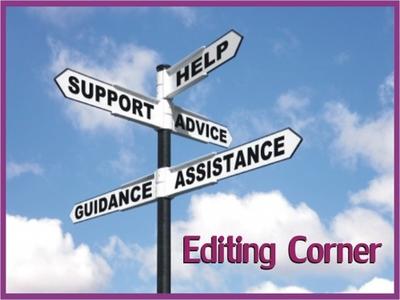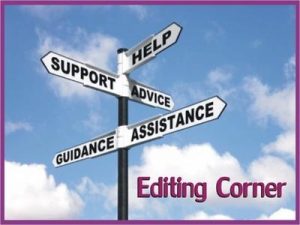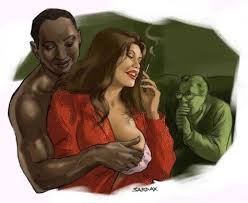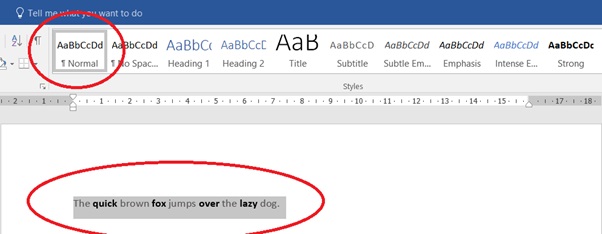
I recently tried writing something new for me, a historical story. In fact, an early medieval story, set in the twelfth century.
In all my writing, I try hard to set the scene in my readers’ minds (yes, revealing my naked ambition by aspiring to multiple readers) by “painting” in what I hope is enough detail for their imaginations to fill in everything else they need to see the scene in their mind.
I blame being exposed to Len Deighton’s The Ipcress File at an impressionable age. But it’s a style I like for being economical and usually engaging.
But how can I imagine being there, watching my characters do their twelfth century … stuff?
Research? As a leisure-time writer with no access to academic libraries, opportunities for “proper” research are a bit restricted.
Yes, of course I used google for some things, but you need to have a good idea of what your real question is before you can figure out which hits are helpful answers.
Some answers are just pretty simple, of course, assuming we remember to ask ourselves “is this right?”
Not long ago, I read a novel set in the 1920’s, in which the main character produced a Glock pistol. A fine choice of weapon for self defence, I’m sure, but an implausible one… Glock wasn’t founded until 1963.
Want to set a scene in a fast-food restaurant in London in say 1970? McDonalds won’t open their first branch there for another four years.
Sometimes it’s kind of convenient to rely on other people’s research, particularly if you’re confident it’s reliable enough, and it looks pretty good.
I found a lot of helpful information in Ian Mortimer’s The Time Traveller’s Guide to Medieval England. He’s a professional academic historian as well as an historical fiction writer, so has access to the right resources, and can probably even read Latin and Middle English. He wrote this book to help readers see the past as real rather than as history, describing what you might see and experience as a visitor to the period. It gave me some insight into how people lived, what they ate and wore, and about their world. He’s since written two similar books, covering the Elizabethan and Restoration periods.
And of course Dr Mortimer isn’t the only writer whose work we can benefit from, if only for some ideas and scene-dressing.
A few examples? Umberto Eco’s The Name of the Rose paints a vivid picture of a 14th century Italian monastery. Edith Pargeter (aka Ellis Peters) set her well-known Brother Cadfael murder mysteries in early 12th century Shrewsbury, in western England. Sarah Woodbury’s Gareth and Gwen mysteries are set in 12th century Wales, when it was still a separate country from Norman-ruled England, and Dublin was a Viking city. Or there are the Stanton and Barling mysteries, by EM Powell, again set in the 12th century, where the two main characters were the nearest thing the English justice system had to detectives.
There are factual TV shows and series which can help us “see” the past a little more clearly as a real time and place, particularly the “re-enacting” ones. There were several excellent British TV series about agricultural life in the past – the Tudor Monastery Farm, the Victorian Farm, the Edwardian Farm and the Wartime Farm (ie 1939-1945). The “supersizers” series by Giles Coren and Sue Perkins were factual entertainment about the history of food, including the two of them trying out things from the period, like clothing and historically accurate meals. It’s worth remembering our ancestors ate a far wider range of animals, birds and fish than we do. That wasn’t because these were notably tasty, more of an “eat it or go hungry” choice. I’ve read that swan tastes pretty awful.
I’ve read plenty of books (or listened to the audiobooks) which conveyed the period nicely for me. The Sherlock Holmes stories, written between 1887 and 1927, mentioned telegrams, daily postal services, messenger services, the introduction of telephones, and using frequent train services. The unrestricted access to opium and cocaine is surprising to modern readers, but both were readily available at the time, when it’s been estimated that a quarter of doctors were addicted to opium.
Other books I’ve enjoyed which were set in the early 1950’s in Britain described a time of post-war austerity, limited private car ownership, commonplace use of trains with helpful station staff (including porters), and, in some areas, telephone calls still connected via operators who might just be listening in.
On the other hand, books actually written in earlier periods may not be that helpful, as the authors expected their readers to at least be familiar with the world the characters lived in (eg Fielding, Austen, Hardy or Dickens).
What about old TV shows and films, from the 1920’s on? These might show regular life in the US before air conditioning – wiping the back of your neck with a handkerchief in summer – everyone wearing hats and other period fashions, steam engines in widespread use on the railways, horses and steam traction engines being used on farms, manual typewriters, rotary dial telephones, telex machines, card index systems, hot metal newspaper printing…
Some modern shows and movies made a big effort to create realistic-looking settings, and I thought Versailles, The Musketeers, Taboo, and Poldark certainly gave the impression of being true to period. The 2005 film adaptation of Pride and Prejudice with Matthew Macfadeyn and Keira Knightly was a notable hatchet job of the book which had some fabulous background details about life for the rural “comfortably-off” around 1800.
Although it’s primarily fantasy, there’s a lot of historical accuracy in the Game of Thrones world. Not the dragons, obviously, but the background details of life in a castle and so on.
The TV series Britannia ran rings around historical accuracy and even plausibility. But what the heck, it’s only a story.
I watched Die Hard the other night (my go-to Christmas film), made in 1988 complete with women’s “big hair” styles, clumsy-looking computer systems, CB radios, but no mobile phones. Richard Gere’s character in Pretty Woman (1990) had a mobile phone, which looks hilariously clunky today, like two house bricks. Even Dirty Dancing had a wealth of background detail you could study – the idea of annual month-long stays at the same stuffy resort centre, the entertainment, fashions, and manners.
It’s probably wise to resist overdoing your scene-setting. While you might be tempted to include things in the narrative like books or albums popular at the time, unless these are subjects discussed by the characters, it might come across as “telling”. Perfect incidental visual details in a TV show or film, though.
We may be fortunate in Britain with our long history, as we have some great places to visit which can help our imaginations. Neolithic constructions, iron-age hill forts, Roman forts and buildings, assorted castles and historic houses, and some decent museums…
The Weald and Downland Museum has more than forty historic buildings representing a thousand years of history. Blists Hill Victorian Town, operated by the Ironbridge Gorge Museum Trust, recreates a Victorian town for visitors, complete with a cast of re-enactors. The Beamish Open-Air Museum lets you glimpse industrial life in the northeast of England during the 19th and 20th centuries. I know the US has something similar at Colonial Williamsburg.
A lot of historic buildings and sites in Britain run events where visitors can meet re-enactors and get a brief glimpse of a version of the past, such as a medieval camp, or a Victorian mill or kitchen.
And then there are jousting displays and re-enacted battles and skirmishes, typically Viking or English Civil War. There are groups of enthiasts who do Roman, Napoleonic, Victorian and WW1 or WW2 military displays.
How about the large-scale annual Battle of Hastings rematch? Somehow, the bloody Normans always win, but maybe one year…
One thing we can’t get from these museums are some of the grim realities of even our recent past, which can be invaluable for the historical fiction writer. Dreadful poverty. The feudal system. Insanitary living conditions. A monotonous and limited diet. Frequent poor years for farming, with not infrequent famines. Thousands of people affected by ergotism. Half of children dying before the age of twenty-one. Huge numbers dying and suffering from disease, with no health or dental care, aggravated by malnutrition. Lives ruled by superstition and religion. The acceptance that the rich and noble were more important simply by right of birth. An almost matter-of-fact indifference to cruelty and suffering. Crusades, literal witch-hunts, wars, revolts and uprisings. The high death toll on long sea-journeys from disease, including an expected 50% from scurvy.
Or how about a disaster story set during one of the many fires which destroyed or severely damaged largely-wooden medieval European cities and towns? London had three great fires (1135, 1212 and 1666) and twelve major ones (two in Roman times, then in 675, 798, 892, 1087, 1130, 1132, 1220, 1227, 1299 and 1633). Lots of other towns and cities had similar incidents: google “list of town and city fires” and feel relief for modern building codes and well-equipped professional firefighters.
The past has all sorts of “detail” things which can help or hinder a writer, too. These are often overlooked for convenience in fiction.
Clothing
Between the thirteenth and seventeenth centuries, various European countries and the Massachusetts Bay Colony in America had “sumptuary laws”, restricting people’s choice of clothing. And fashions changed in the past almost as rapidly as today.
Religion and religious practices
In England, until the fifteenth century reformation, fast days (or meat-free days) occupied almost half the year – including every Wednesday, Friday, Saturday, and all of Lent. Vegetables, or if you were lucky, fish. The selection of vegetables available was surprisingly limited, too. And don’t forget that people then were generally incredibly devout and very superstitious compared to us.
Language
As an example, for 200 years after the Norman Conquest of England, the general population spoke English, the ruling classes spoke Anglo-Norman and French, and very few of either group spoke the other’s language. Church services were conducted in Latin, of course. Legal cases could only be conducted in English from 1362, and the court switched to English by the end of the fourteenth century. By English I mean Middle English – check out Chaucer’s “Canterbury Tales” in the original text for a written form in the modern alphabet. And language use changed as fast in the past as it does today. There were also a wealth of local accents and dialects in all languages, some even more strikingly different from the norm than we have now.
Actually, language raises another question – dialogue. How closely do we follow what we think the speech styles would be in that period? It might sound perfect to someone from that time, but seems at best flowery and roundabout to us. How “realistic” does it need to be in order to convey a sense of the period? At the time, it was everyday language, after all.
Inevitably, there are a few books available to help those keen to write historical fiction.
Medieval Underpants and Other Blunders caught my attention when I perused Amazon, if only for the title. Historical Fiction Writing – A Practical Guide and Tool-Kit by Myfanwy Cook and Bernard Knight looks like a useful book, based on popular workshops Myfanwy has run. She’s a successful writer herself.
As with all other aspects of writing, there are no hard rules, only conventions. Even spelling’s just a convention, after all.
Readers who enjoy lots of historical fiction may well have expectations, so it’s probably worth becoming familiar with the genre or sub-genre you’re writing in.
Unless you’re writing an alternative history or steampunk, if you include significant factual details, do check them as best you can.
Other than that, well, have fun developing your ideas and writing your stories.
Oh, and do keep an eye open for intriguing historical discoveries. Spotting a mention of medieval underpants in a story might not actually be something to snigger about…
Oh, by the way, the comments I had back on my story from some of my collaborative critiquing group certainly left me feeling I’d got the “feel” right, which was rather nice to know. I’ve got some revisions to do, then I’ll see if I can get the story published.

































